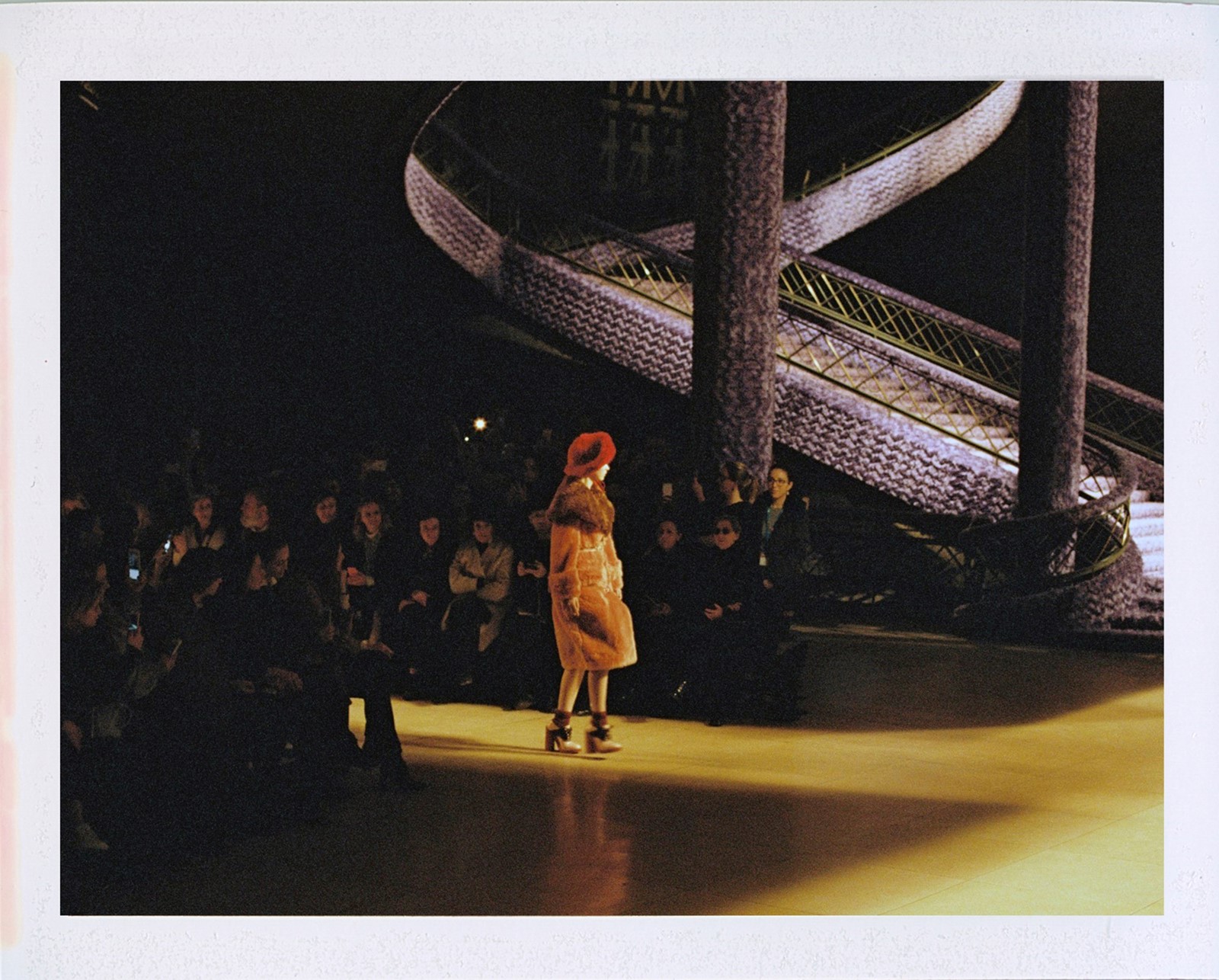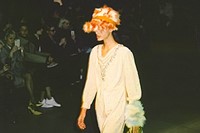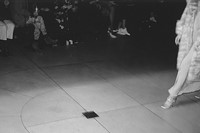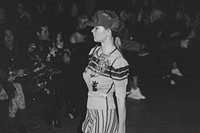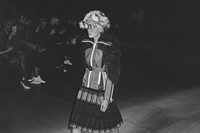“The madness of glamour in front of an uncertain future,” Miuccia Prada said after her Autumn/Winter 2017 Miu Miu show, couching her fish scale paillettes, acres of fur (real and faux) and twinkling embroideries not in a tired trend debate but a larger socio-political context. It’s typically Prada: a woman who has always seen fashion as, if not inextricably entwined with politics, then certainly running parallel to it. She wore Yves Saint Laurent to march in Communist rallies in the 1970s – incidentally, Saint Laurent’s Rive Gauche ready-to-wear line was then a recent fashion revolution: a democratisation of the elitism of haute couture, which signalled the future of fashion. What Mrs Prada wore then is what she makes now – clothes that always express and sometimes amplify the mood of the times. Clothes with a deeper message than their surfaces may betray.
And so, while her most recent Miu Miu collection seems a distraction from our current age of anxiety, a sublimely superficial multi-hued, tactile explosion of fuzzy-wuzzy Womble fur and sparkle, there’s something more interesting at play. Indeed, that whole notion of glamour – as well as the sequins and the fur – ties this collection back to the Hollywood of the 30s and 40s. Yes, there’s a 70s bent – but the 70s was, to a large degree, a regurgitation of that era, the first full piecemeal revival of a past decade, replete with an Art Deco resurgence in fashionable homes and a camp reclamation of the arch films of Greta Garbo and Marlene Dietrich. Why the 30s and 40s in the 70s? As escape – escape from the hardship of economic stagnation and inflation, the Yom Kippur war, the three-day week in the UK and the Nixon impeachment in the US. When everything is dank and gloom, the easiest escape is into… well, the madness of glamour. Sounds like just what we need circa right now, right?

Speaking of a moment of mad glamour with an uncertain future, however, the 30s feels like the original. After all, the 30s rolled out under the shadow of bubbling political strife, of extremism – the rise of far-right and left wing alike being perceived as threats to the very fabric of society. Or at least, of what remained, following the crash of 1929 and ensuing Great Depression. Oddly, rather than hardships and hyperinflation, it’s the hysteric glamour of that period that has remained cemented in the memory: screen sirens in bias-cut satins (which Miuccia Prada also referenced in her madcap mainline collection last month in Milan). Perhaps that’s because they’re who populated the popular mediums of the time – the fashion magazines and epic films – and so they’re the images which have been committed to posterity, rather than the harsh actuality. In a very postmodern way, the unreality becomes more real than the reality.
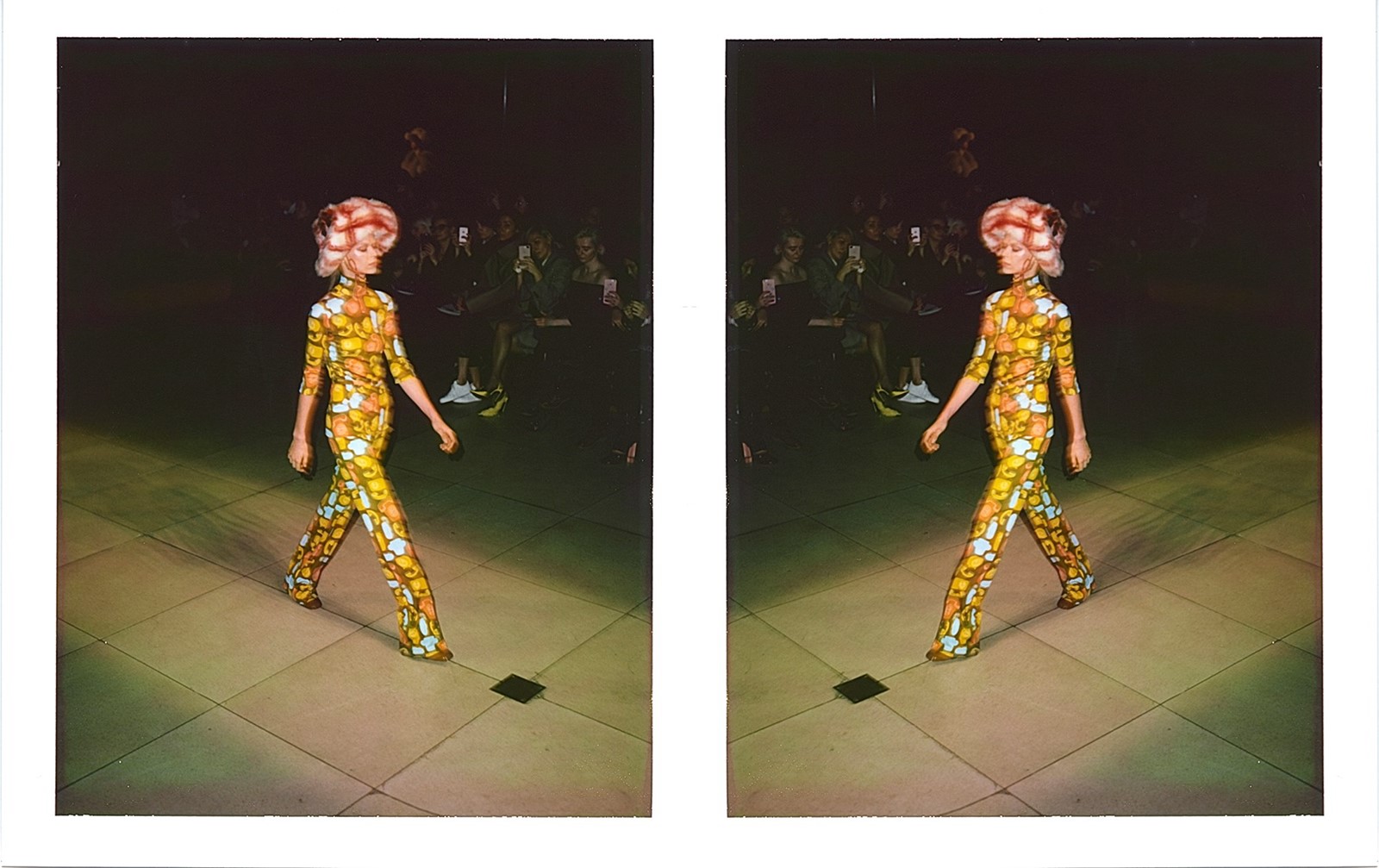
Speaking of unreality brings us, fairly obviously, to Surrealism. Besides cinema, that was the other great escape of the 1930s: an escape into oddity, into strange alien landscapes peopled with molten clocks and headless mannequins wearing classical drapery – drapery that, oddly, didn’t look that different to the dresses by Vionnet or Adrian that appeared, respectively, on the pages of Vogue and the screens of Metro-Goldwyn-Mayer. There was a focus on fashion by the Surrealists – perhaps because it was something people saw every day that could be subverted, made disturbing and dream-like. Meret Oppenheim’s 1936 Object – better known as Breakfast in Fur – subverts the glamour of Chinese gazelle pelt by using it to smother a utilitarian object: a cup and saucer. It renders it useless, slightly repulsive even, like a crouching animal. You got the same sense last week when Miuccia Prada smothered her entire Miu Miu venue – including a precarious, Sunset Boulevard-esque staircase – in faux fur, of a virulent, Sesame Street-ish shade of purple, like the skin of the Grimace character who occasionally tries to flog McDonald’s to unsuspecting children. The Palais d'Iéna wound up resembling the bowels of some prehistoric beast.

It also relates, directly, to the interior of the boutique of Surrealist couturier Elsa Schiaparelli – an Italian also, who commissioned Dalí to create her decor and wound up with a gigantic shocking pink furry teddy bear with drawers in its stomach as an unconventional storage solution. Schiap – as she was known, pronounced “Scap” – loved fur, not for its luxury so much as for its easy ability to unsettle, much like Mrs Prada, to whom she was directly compared and contrasted in the 2012 Metropolitan Museum of Art Costume Institute show. The 1938 boots, created for Schiaparelli by Andre Perugia but designed in collaboration, are suede, with great swathes of monkey-fur around the ankles. They’re very simple, and kind of chic, but it looks as if you’ve embedded your feet into the scalps of unfortunate animals while you’re wearing them. They recall René Magritte’s 1935 painting Love Disarmed, where a pair of shoes sprout flowing tresses of hair.
Miu Miu’s shoes sprouted fur too, although to far more alluring effect. The Surrealism here came from the juxtaposition of real and fake: fox fur positioned versus faux fur, all whipped up in a fondant hue, blurring the line between the actual and the make-believe. Is that a reference to Magritte, or to the so-called “fake news” phenomenon of the past few months? Playing with perceptions of imagination and reality is not only terribly surreal, but very Prada.
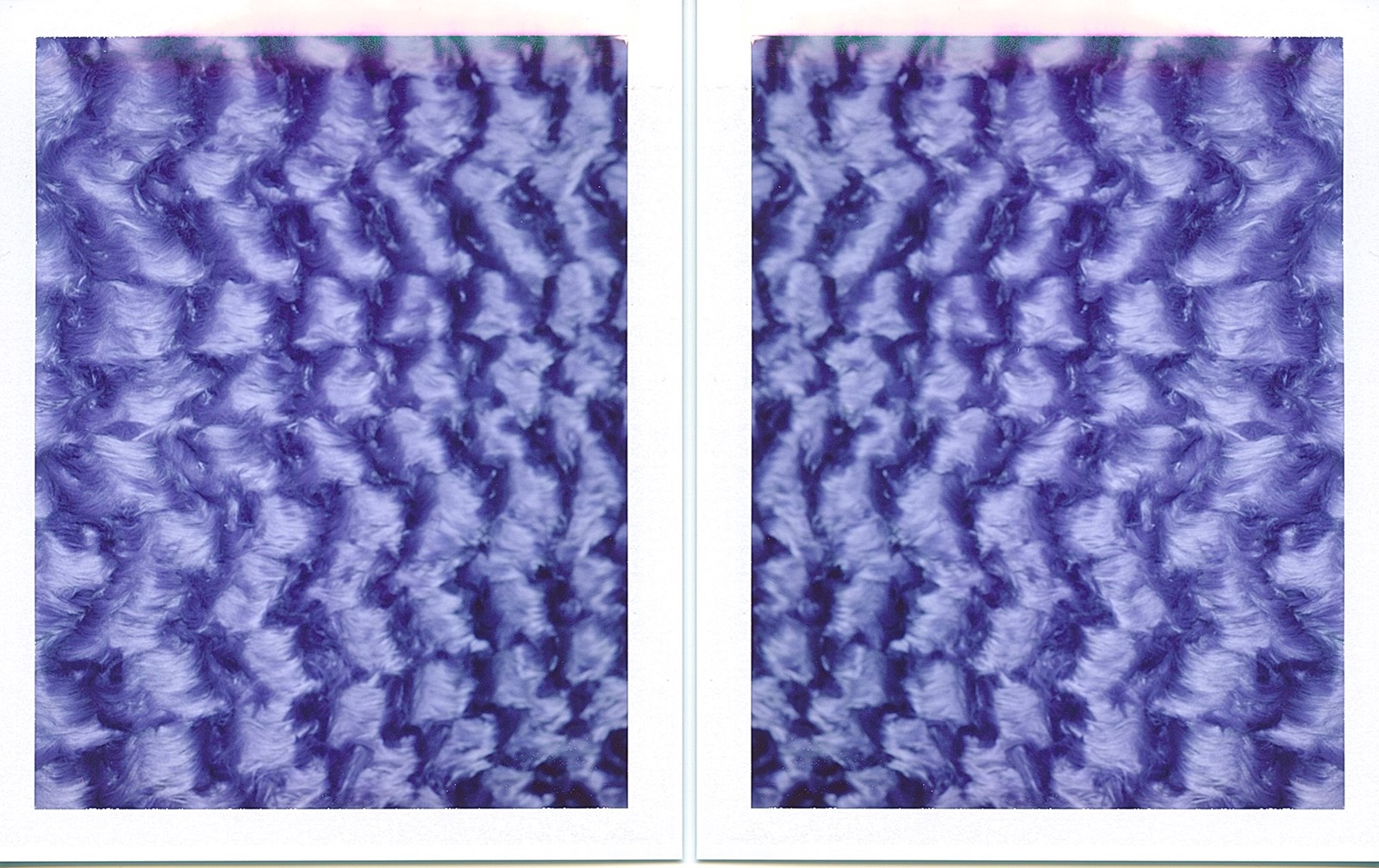
But here, the results were not just surreal, but wantonly glamorous. Those two modes of escape from the mundanity of everyday life – whether in the 1930s or the 2010s – aren’t necessarily mutually exclusive. The set, specifically, reminded me of an old tale from the golden age of Hollywood: in 1932, Marlene Dietrich had her new custom-built Cadillac lushly carpeted in Tibetan goat. She came to hate it, “for it constantly tangled its long hairs around her high heels, making her trip, and catapult into the back seat whenever she entered,” wrote her daughter, Maria Riva, in a 1995 biography. It makes for a surreal picture: the icy Dietrich face-planted by her lust for a furry rug. Yet, as Riva recalls, “It looked so glamorous that my mother never had it changed.” Luckily, no models were harmed in the staging of this Miu Miu show.
For our A/W17 fashion week coverage, anothermag.com is collaborating with Gasoline, a photography collective working with visual artists around the world. Here, Will Grundy presents a look at Miu Miu's A/W17 show.
